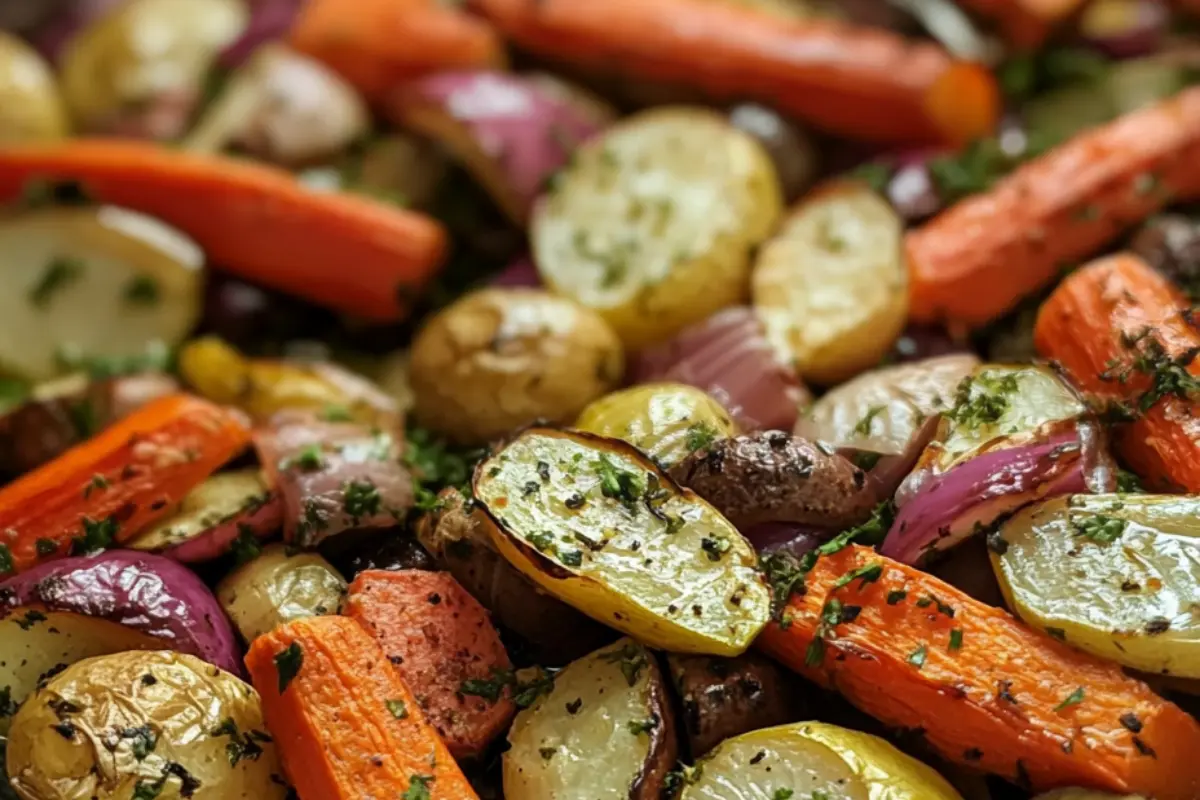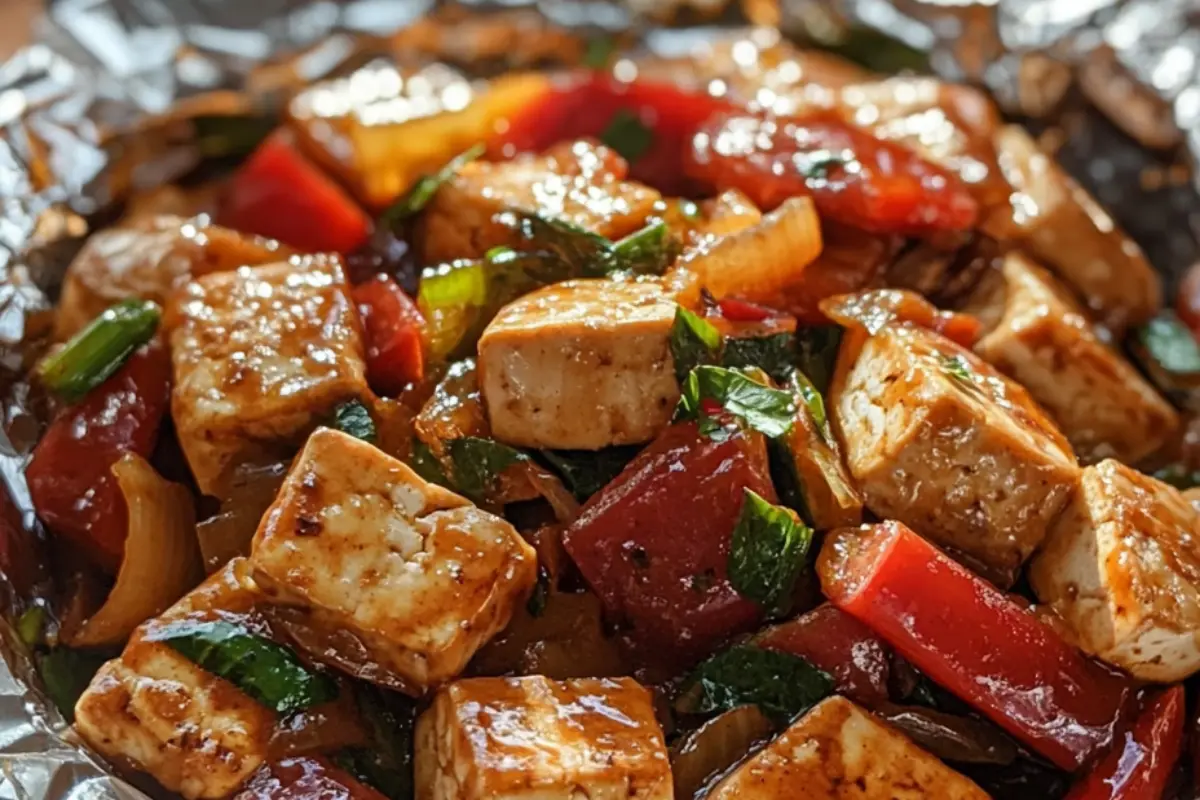Rhubarb and tofu stir-fry is a unique and nutritious dish that combines the tartness of rhubarb with the savory goodness of tofu. This recipe not only offers a delightful flavor combination but also packs a punch in terms of health benefits. Rhubarb, often known for its use in desserts, is equally wonderful in savory dishes, while tofu provides a plant-based protein source that’s both versatile and nutritious. Let’s dive into this delici ous recipe and explore how to make the best rhubarb and tofu stir-fry, ensuring we retain all the health benefits along the way.
 Understanding Rhubarb and Tofu
Understanding Rhubarb and Tofu
What is Rhubarb?
Rhubarb is a perennial vegetable often treated as a fruit in culinary contexts. It’s known for its vibrant red stalks and tart flavor. Originally from Siberia, rhubarb has been used for medicinal purposes for centuries and only later became a popular ingredient in kitchens around the world.
Nutritional Benefits
Rhubarb is low in calories but high in important nutrients such as vitamin K, vitamin C, potassium, and manganese. It’s also a good source of dietary fiber, which aids digestion and promotes a healthy gut. In addition to these, rhubarb contains antioxidants that help fight free radicals in the body, potentially reducing the risk of chronic diseases.
Varieties of Rhubarb
There are several varieties of rhubarb, ranging from deep red to light green in color. The most common varieties include ‘Victoria,’ ‘Canada Red,’ and ‘Crimson Cherry,’ each with a slightly different flavor profile and level of tartness.
What is Tofu?
Tofu, also known as bean curd, is made from soy milk that’s been coagulated and pressed into blocks. It’s a staple in many Asian cuisines and is prized for its versatility and nutritional value.
Nutritional Benefits
Tofu is an excellent source of plant-based protein, making it a great meat substitute for vegetarians and vegans. It’s also rich in iron, calcium, and magnesium. Tofu contains all nine essential amino acids, making it a complete protein source. Tofu is low in calories and cholesterol-free, making it a heart-healthy choice.
Types of TofuTofu
Different Types of TofuTofu comes in various textures, including silken, soft, firm, and extra-firm. Each type has its specific uses in cooking, with firmer varieties being better suited for stir-frying due to their ability to hold their shape and absorb flavors.
The Healthiest Way to Eat Rhubarb
Nutritional Highlights of Rhubarb
Rhubarb is rich in vitamins and minerals, making it a great addition to a balanced diet. Some of the key nutrients found in rhubarb include:
- Vitamin K: Essential for bone health and blood clotting.
- Vitamin C: Important for immune function and skin health.
- Potassium: Helps regulate blood pressure and supports cardiovascular health.
- Manganese: Involved in bone formation, blood clotting, and reducing inflammation.
- Dietary Fiber: Promotes healthy digestion and can help lower cholesterol levels.
Best Cooking Methods for Retaining Nutrients
To ensure you get the most nutrients out of rhubarb, consider the following cooking methods:
- Steaming: Preserves most of the nutrients compared to boiling.
- Baking: Retains nutrients while adding a unique flavor.
- Grilling: Adds a smoky taste while keeping the nutritional value intact.
- Stir-Frying: Quick cooking at high heat helps retain nutrients and enhances the flavor.
Recipes and Meal Ideas
Incorporating rhubarb into various dishes can be both healthy and delicious. Here are some ideas:
- Rhubarb Compote: A simple and healthy topping for yogurt or oatmeal.
- Rhubarb Smoothies: Blended with fruits and greens for a nutritious drink.
- Rhubarb Salads: Mixed with fresh vegetables and a light vinaigrette.
- Rhubarb Desserts: Used in moderation, rhubarb can add a tangy twist to desserts like crumbles and pies.
What Not to Mix with Tofu
Common Ingredients that Clash with Tofu
Certain ingredients don’t pair well with tofu due to flavor conflicts or negative health interactions. Here are some to avoid:
- Strong Flavored Vegetables: Ingredients like Brussels sprouts or cabbage can overpower the delicate taste of tofu.
- Highly Acidic Foods: While a little acid is good for marinating, too much can break down tofu’s texture. Avoid excessive use of lemon or lime juice.
- Dairy Products: Combining tofu with dairy can lead to digestive issues for some people, especially those who are lactose intolerant.
Tips for Avoiding Unwanted Combinations
To ensure your tofu dishes are delicious and healthy, consider these tips:
- Balance Flavors: Use mild-flavored vegetables like bell peppers, zucchini, or mushrooms that complement tofu’s taste.
- Marinate Wisely: Use soy sauce, ginger, garlic, and a small amount of vinegar or citrus juice to enhance tofu’s flavor without compromising its texture.
- Cook Separately: If you must use strong-flavored or acidic ingredients, cook them separately and mix them with tofu just before serving.
Health Implications of Bad Combinations
Combining tofu with the wrong ingredients can lead to:
- Digestive Issues: Certain food combinations can cause bloating, gas, or indigestion.
- Nutrient Loss: Some combinations might inhibit the absorption of essential nutrients.
- Flavor Imbalance: Overpowering flavors can make tofu less enjoyable to eat, discouraging its inclusion in a healthy diet.
Choosing the Best Tofu for Stir-Fry 
Types of Tofu Suitable for Stir-Fry
Tofu comes in several forms, each suited to different types of cooking. For stir-frying, the best options are:
- Firm Tofu: Has a dense texture that holds up well in stir-fries.
- Extra-Firm Tofu: Even denser than firm tofu, making it ideal for dishes where tofu needs to maintain its shape.
- Super-Firm Tofu: The densest type, often used in recipes that require tofu to have a meat-like consistency.
How to Prepare Tofu for Stir-Frying
Proper preparation is key to achieving the best texture and flavor in your stir-fry:
- Press the Tofu: Remove excess water by pressing tofu between paper towels or using a tofu press. This helps it absorb more marinade and develop a better texture.
- Cut into Uniform Pieces: Ensure even cooking by cutting tofu into evenly sized cubes or slices.
- Marinate for Flavor: Use a mix of soy sauce, garlic, ginger, and a bit of oil to marinate tofu for at least 30 minutes before cooking.
Best Brands and Where to Buy
Quality tofu can make a big difference in your dish. Here are some recommended brands and tips on where to find them:
- Nasoya: Widely available in supermarkets and known for its firm and extra-firm varieties.
- House Foods: Offers a range of tofu products, including organic options.
- Wildwood: Known for its super-firm tofu, perfect for stir-fries.
- Where to Buy: Look for tofu in the refrigerated section of grocery stores, health food stores, and Asian markets.
How to Cook Rhubarb for Stir-Fry
Preparing Rhubarb for Cooking
Proper preparation is crucial to ensure rhubarb is safe to eat and cooks evenly:
- Trim the Leaves: Rhubarb leaves are toxic and should always be discarded. Trim them off and focus on the stalks.
- Wash Thoroughly: Rinse the stalks under cold water to remove any dirt or debris.
- Cut into Uniform Pieces: Slice the rhubarb into evenly sized pieces, about 1/2 inch thick, to ensure even cooking.
Cooking Techniques for Stir-Fry
To incorporate rhubarb into your stir-fry, follow these techniques:
- Blanching: Briefly blanch the rhubarb in boiling water for 1-2 minutes, then shock in ice water to retain its color and texture.
- Stir-Frying: Add blanched rhubarb to the stir-fry towards the end of cooking. This prevents it from becoming too mushy.
- Balancing Flavors: Rhubarb’s tartness pairs well with sweet and savory flavors. Consider adding a bit of honey or sugar to balance the tartness.
Flavor Pairings with Rhubarb
Rhubarb can be paired with a variety of ingredients to create a well-balanced stir-fry:
- Sweeteners: Honey, brown sugar, or maple syrup can balance rhubarb’s tartness.
- Aromatics: Garlic, ginger, and onions add depth of flavor.
- Vegetables: Bell peppers, snap peas, and carrots complement rhubarb’s texture and taste.
- Proteins: Tofu, chicken, or shrimp work well with rhubarb in stir-fry dishes.
Rhubarb and Tofu Stir-Fry Recipe
Ingredients List
To make this rhubarb and tofu stir-fry, you’ll need the following ingredients:
- For the Stir-Fry:
- 1 block of firm or extra-firm tofu, pressed and cubed
- 2 cups rhubarb, trimmed and sliced
- 1 red bell pepper, sliced
- 1 yellow bell pepper, sliced
- 1 cup snap peas
- 2 cloves garlic, minced
- 1 tablespoon ginger, minced
- 2 tablespoons vegetable oil
- 2 tablespoons soy sauce
- 1 tablespoon honey or maple syrup
- 1 tablespoon rice vinegar
- Salt and pepper to taste
- For the Marinade:
- 2 tablespoons soy sauce
- 1 tablespoon rice vinegar
- 1 teaspoon sesame oil
- 1 teaspoon honey or maple syrup
- 1 clove garlic, minced
- Variations:
- Protein Options: Substitute tofu with tempeh, seitan, or chicken for different protein sources.
- Vegetables: Add broccoli, asparagus, or bok choy for more variety.
- Seasonings: Experiment with sesame oil, hoisin sauce, or chili paste for additional flavor.
Step-by-Step Cooking Instructions for Rhubarb and tofu stir-fry
1. Marinate the Tofu:
- In a small bowl, mix together the marinade ingredients.
- Add the cubed tofu to the marinade, toss to coat, and let it sit for at least 30 minutes.
2. Prepare the Rhubarb:
- Blanch the sliced rhubarb in boiling water for 1-2 minutes, then shock it in ice water. Drain and set aside.
3. Cook the Tofu:
- Heat 1 tablespoon of vegetable oil in a large skillet or wok over medium-high heat.
- Add the marinated tofu and cook until golden brown on all sides, about 5-7 minutes. Remove from the pan and set aside.
4. Stir-Fry the Vegetables:
- In the same skillet or wok, add the remaining tablespoon of vegetable oil.
- Add the minced garlic and ginger, and sauté until fragrant, about 1 minute.
- Add the bell peppers and snap peas, and stir-fry for 3-4 minutes until they start to soften.
5. Combine Ingredients:
- Add the blanched rhubarb to the skillet along with the cooked tofu.
- Pour in the soy sauce, honey or maple syrup, and rice vinegar. Stir to combine.
- Cook for another 2-3 minutes until everything is heated through and the flavors are well combined.
6. Season and Serve:
- Season with salt and pepper to taste.
- Serve hot over steamed rice or noodles.
7. Tips for Perfecting the Stir-Fry:
- Pressing Tofu: Ensure tofu is well-pressed to remove excess water for a better texture. You can use a tofu press or place tofu between paper towels and weigh it down with a heavy object.
- Even Cutting: Cut all ingredients into similar sizes for even cooking. This ensures that each piece cooks at the same rate, preventing some parts from being overcooked or undercooked.
- High Heat: Stir-fry at high heat to keep vegetables crisp and tofu golden. High heat also helps in caramelizing the tofu and vegetables, adding depth to the flavor.
FAQs about Rhubarb and tofu stir-fry
What’s the Healthiest Way to Eat Rhubarb?
The healthiest way to eat rhubarb is to incorporate it into a balanced diet, using cooking methods that preserve its nutrients. Steaming, baking, and stir-frying are excellent methods. Avoid adding too much sugar to keep the dish healthy.
What Not to Mix with Tofu?
Avoid mixing tofu with strong-flavored vegetables like Brussels sprouts or highly acidic foods that can alter its texture. Additionally, combining tofu with dairy can cause digestive issues for some people.
What Kind of Tofu is Best for Stir-Fry?
Firm or extra-firm tofu is best for stir-fry. These types hold their shape well and absorb flavors better than softer varieties. Ensure to press the tofu before cooking to remove excess moisture.
How Should Rhubarb be Cooked?
Rhubarb can be cooked in various ways, including blanching, steaming, baking, and stir-frying. For stir-fry, blanching briefly before adding it to the pan helps retain its color and texture while balancing its tartness with sweet and savory ingredients.
Conclusion
Rhubarb and tofu stir-fry offers a perfect balance of tart and savory flavors, making it a standout dish in any healthy eating plan. Rhubarb’s nutritional benefits, paired with tofu’s protein and versatility, create a meal that is both satisfying and nourishing. By following the preparation and cooking tips outlined in this article, you can master the art of making this delicious stir-fry.
Takeaways:
- Nutrient-Rich Ingredients: Rhubarb and tofu are both packed with essential vitamins and minerals.
- Versatility: This dish can be customized with your favorite vegetables and seasonings.
- Healthy Cooking Methods: Stir-frying and blanching help retain the nutritional value of the ingredients.
We hope you enjoy making and eating this rhubarb and tofu stir-fry as much as we do. Give it a try, and don’t forget to share your experience with us!
Engaging Question: What creative variations will you try in your rhubarb and tofu stir-fry? Share your ideas and experiences in the comments below!


 Understanding Rhubarb and Tofu
Understanding Rhubarb and Tofu



